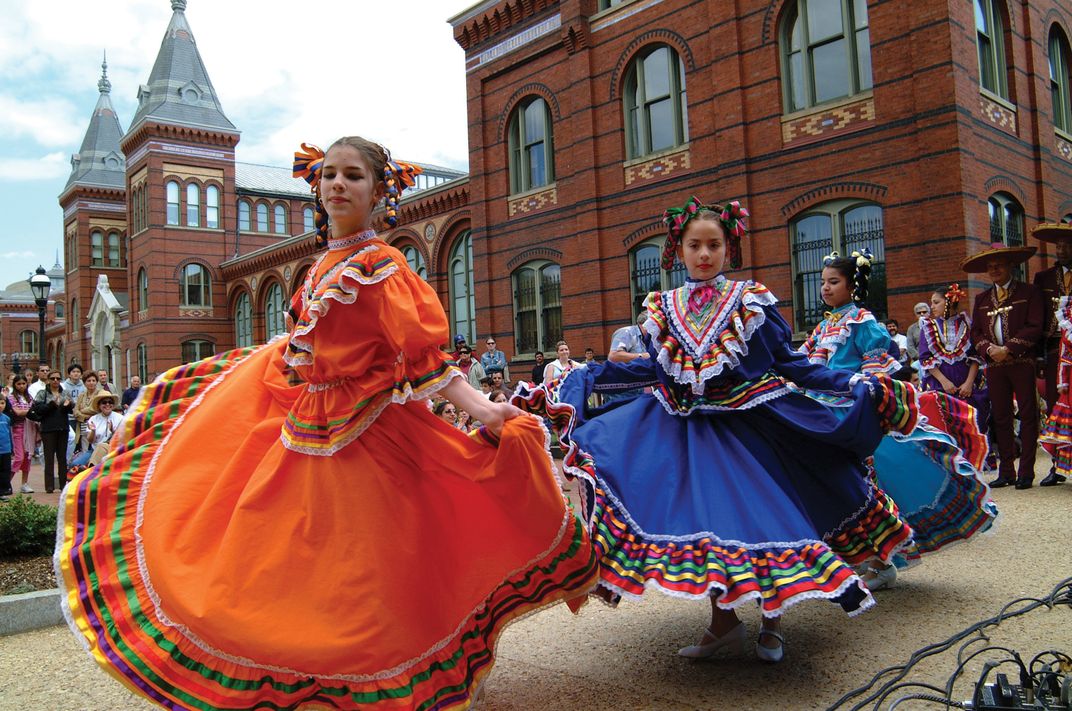Congress Approves Smithsonian Museums Honoring Women and Latino Americans
The legislative body’s year-end spending bill authorized the creation of two much-anticipated museums
:focal(2331x1668:2332x1669)/https://tf-cmsv2-smithsonianmag-media.s3.amazonaws.com/filer/e6/de/e6deb5ea-3ea8-4b55-b809-39b50b997a11/xv4a0034.jpg)
Days after a single senator blocked legislation approving two long-awaited additions to the Smithsonian Institution—a National Museum of the American Latino and a museum dedicated to women’s history—Congress has officially authorized their creation.
As Sarah Bahr reports for the New York Times, lawmakers passed the measures Monday night as part of a $2.3 trillion omnibus bill that earmarked $900 billion for Covid-19 relief and $1.4 trillion for government spending. If President Donald Trump signs the bill into law (a prospect called into question by his characterization of the pandemic relief package as a “disgrace”), the Smithsonian will be able to begin the lengthy process of transforming the proposed museums into brick-and-mortar buildings.
“We are reviewing the legislation carefully,” a spokesperson says in a statement provided to Smithsonian magazine. “The Smithsonian has unparalleled experience building national museums, and is already doing significant work to tell the stories of American [w]omen and Latinos.”
The representative adds, “We look forward to building two world-class museums to further amplify these stories and help our country learn more about the impact that women and Latinos have had on the fabric of our nation.”
Expected to stand on or near the National Mall, the proposed museums will be the first to join the Smithsonian since the National Museum of African American History and Culture opened in September 2016. Like that museum, which first welcomed visitors 28 years after Representative John Lewis co-sponsored a bill proposing its creation and 13 years after it received congressional approval, the new venues will likely trace a protracted path from inception to opening. Both will rely on a combination of federal funds and private donations (50 percent each) to finance their eventual construction.
/https://tf-cmsv2-smithsonianmag-media.s3.amazonaws.com/filer/9e/5c/9e5c0f55-7967-4d71-b150-e07d49dbe7d7/credit-alankarchmer_220.jpg)
Calls to establish a national museum honoring the more than 60 million Latino American residents in the United States date back to 1994, when an internal task force documented the Smithsonian’s “pattern of willful neglect” toward Latinos. In 1997, the museum and research complex responded to the findings by establishing the Smithsonian Latino Center, which works to highlight Latino American culture through public programs, exhibitions and collecting initiatives.
Congress authorized a commission to examine the possibility of a Latino American museum in 2008. The group formally recommended the museum’s creation in a 2011 report that placed the proposed 310,000-square-foot space’s estimated cost at $600 million; legislators have introduced bills on the subject in every congressional session since.
“We have overcome tremendous obstacles and unbelievable hurdles to get to this historic moment, but, as I’ve said before, Latinos are used to overcoming obstacles,” says Senator Bob Menendez, who sponsored the Senate’s version of the bill and has long advocated for the museum’s creation, in a statement. “Passage of the National Museum of the American Latino is the culmination of decades of hard work, advocacy, successes and set-backs in the movement to recognize Latino contributions to America's history, economy and culture.”
Friends of the National Museum of the American Latino, an advocacy group that is not affiliated with the Smithsonian, also celebrated the legislation’s passage. (The Smithsonian Institution is prohibited from campaigning for new museums.) Speaking with NPR’s Elizabeth Blair, the organization’s president, Estuardo Rodriguez, deemed the bill’s inclusion in the Covid-19 relief package fitting, as “Latinos and Latinas have been disproportionately impacted by the pandemic, suffering high rates of infection and death.”
He added, “The legislation to create a museum serves to not only honor the past contributions of American Latinos for over 500 years, but recognize their sacrifices today.”

The national museum of women’s history, meanwhile, traces its origins to 1998, when Representative Carolyn B. Maloney first introduced legislation on the subject. In 2014, Congress established a commission tasked with studying the museum’s “necessity and feasibility,” per USA Today’s N’dea Yancey-Bragg and Nicholas Wu. Two years later, the bipartisan group “concluded unanimously that the American people need and deserve such a museum,” according to a statement from Maloney’s office.
“How fitting that we pass this bill as we mark the centennial of the 19th Amendment and in the year in which we elected our first woman vice president,” says Maloney in the statement.
Last year, the Congressional Budget Office estimated the proposed 350,000-square-foot museum’s cost at $375 million over a nine-year period. The space will build on the work of the Smithsonian American Women’s History Initiative, which was established in 2018 to research, collect, document, display and share women’s stories.
Decades of legislative efforts aimed at establishing the two museums culminated in a December 10 Senate vote that legislators on both sides of the aisle had expected to unfold without controversy. Because the measure required unanimous consent to move forward, the objections of a single senator—Mike Lee, a Republican from Utah—were enough to temporarily derail the long-awaited legislation.
“My objection to the creation of a new Smithsonian museum or series of museums based on group identity—what Theodore Roosevelt called hyphenated Americanism—is not a matter of budgetary or legislative technicalities,” said Lee, who was one of just six senators to vote against the omnibus spending bill, as quoted by the New York Times’ Nicholas Fandos. “It’s a matter of national unity and cultural inclusion.”
Once the bill is signed into law, the Smithsonian will have two years to select the museums’ locations. As Peggy McGlone writes for the Washington Post, options include the historic Arts and Industries Building and a site on the northwestern portion of the National Mall, near the U.S. Capitol.
“Creating new museums is challenging, but, with appropriate funding, the Smithsonian has the skill and expertise to do it right,” said Smithsonian Secretary Lonnie G. Bunch III at a Senate Rules Committee hearing held ahead of the December 10 vote. “We can, and have, created museums that meet the needs of the nation and showcase the U.S. to the world.”
/https://tf-cmsv2-smithsonianmag-media.s3.amazonaws.com/accounts/headshot/mellon.png)
/https://tf-cmsv2-smithsonianmag-media.s3.amazonaws.com/accounts/headshot/mellon.png)